Sorted by date Results 226 - 250 of 518

It is hard to quantify which is more impressive, the sheer size of the estate owned by Doyon Ltd. or the rich and underexplored mineral potential on the lands owned by the Alaska Native Claims Settlement Act regional corporation for Alaska's Eastern Interior. Running the breadth of Alaska between the Brooks Range to the north and Alaska Range to the south, the Doyon region blankets a mineral-rich swath of Alaska's Interior that is nearly the size of Texas. Doyon owns 12.5...

The Koniag Inc. region covers the Kodiak Archipelago, a group of islands off the southern coast of mainland Alaska better known for their enormous brown bears than vast mineral potential. The Alutiiq people that arrived on Kodiak, Afognak, and surrounding islands more than 7,500 years ago were skilled mariners who were deeply connected to the ocean for food and supplies. Over the millennia, these roaming seafarers settled into whaling and fishing villages that sheltered...

Seeking economic and cultural prosperity for its more than 23,000 Tlingit, Haida and Tsimshian shareholders while also looking to provide even greater benefits for future generations, Sealaska takes a balanced approach to developing the resources growing above and stored beneath its lands in Southeast Alaska. This does not mean the Southeast Alaska Native Claims Settlement Act (ANCSA) corporation shuns mining or other resource development in its region, a nearly 600-mile...

If global warming and the associated risk of climate change is due, at least in part, to anthropomorphic causes, it stands to reason that there are too many anthropoids (specifically, humanoids) hanging around. We have always known, I think, that overpopulation is a grave problem to life on earth, primarily because humans, like cockroaches, are omnivorous, ubiquitous, and prolific. It has been said that you could accommodate the entire population of earth in the Grand Canyon....
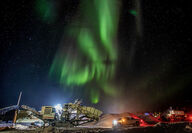
A recent agreement between Vital Metals Ltd. and Ucore Rare Metals Inc. marks a major milestone in establishing a complete North American rare earths supply chain with links in Northwest Territories, Saskatchewan, and Alaska. Vital has already established Canada's only rare earths mine at its Nechalacho project in Northwest Territories and is building a processing facility in Saskatchewan to upgrade the high-grade ore into a midstream carbonated product with a mix of rare...
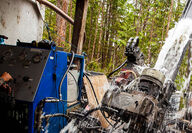
Ucore Rare Metals Inc. Nov. 17 announced that the United States Forest Service has issued a one-year authorization for trenching and bulk sampling at the Bokan Mountain rare earths project in Southeast Alaska. Located on Prince of Wales Island, the Dotson Ridge deposit at Ucore's Bokan Mountain project hosts 4.79 million metric tons of indicated resource containing 31,722 metric tons of total rare earth oxides – 14 lanthanide elements, yttrium, and scandium – plus 1.05 met...

The $1.2 trillion Infrastructure Investment and Jobs Act brightens an otherwise gloomy outlook when it comes to federal policies that impact Alaska and its mining sector. "I believe this is truly historic for our state," Sen. Lisa Murkowski, R-Alaska, said during a Nov. 17 address at the Alaska Resources Conference. While the massive infrastructure bill passage was chalked up as a political win for President Joe Biden, the billions of dollars to be invested into upgrading and...
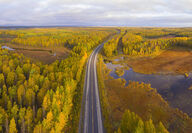
Alaska once again finds itself joining other states in asking the U.S. Supreme Court to rein in a broadened definition of "waters of the United States," or WOTUS, a federal environmental rule that could significantly impact the management of private and public property across the Last Frontier. WOTUS has been a concern for Alaska and many other states since the Obama administration set out to broaden the definition of U.S. waters in 2014, a move that would significantly...

Graphite One Inc. Oct. 13 announced the completion of a 2,052-meter drill program focused on gathering data for a feasibility study on developing a mine at its Graphite Creek project about 35 miles north of Nome, Alaska. A preliminary economic assessment completed in 2017 outlined plans for a mine at Graphite Creek that would produce roughly 60,000 metric tons of 95% graphite concentrate per year and a separate processing facility to refine these annual concentrates into...

As another signal foreshadowing the growing demand for graphite, the Pentagon has added this lithium-ion battery ingredient to its newest National Defense Stockpile Acquisitions List. Published by the U.S. Defense Logistics Agency on Oct. 4, this list calls for DLA's strategic materials department to acquire up to 900 metric tons of graphite to store in government stockpiles over the coming year. Primary reasons for the Department of Defense to have a graphite stash for its ow...

With such incredible technologies at mankind's disposal today, it is easily forgotten the ingenuity and sheer gumption that our predecessors brought to solving some of the more rigorous and demanding jobs that construed early development. The ever-present wheel, hand tools, weaponry, and beyond, the plethora of devices humanity has created, only expanded into breathtaking and mind-numbing concepts our forebearers could never fathom. Areas such as animal husbandry, agriculture,...

Northern Dynasty Minerals Ltd. Oct. 4 reports that it has concluded its 2021 field program at the company's Pebble copper-gold-molybdenum-silver project in Southwest Alaska. The principal focus of this year's program entailed: • The continuation of select environmental baseline studies. • Site care and maintenance, including the Pebble project site, and other facilities located within Iliamna. • The demobilization and removal of facilities and equipment no longer requi...
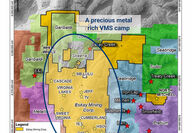
Eskay Mining Corp. Oct. 13 announced the conclusion of a roughly 23,500-meter drill program at its Consolidated Eskay precious metals project in British Columbia's Golden Triangle. Eskay's aggressive 2021 drill program is primarily focused on following up on two gold- and silver-enriched VMS discoveries – TV and Jeff – made last year. Out of 20 holes drilled at these targets last year, 18 cut impressive precious metal intercepts. Highlights from the 2020 drilling at TV include...

Ucore Rare Metals Inc. Oct. 7 announced that it has entered into a memorandum of agreement with Alaska's Southeast Conference for the evaluation and potential establishment of a Natural Resource Development Complex that would host Ucore's planned Alaska Strategic Metals Complex, a facility for processing rare earth elements and other critical minerals. "The establishment of the MOA between Ucore and Southeast Conference is an important moment in the development of the Alaska S...

The global transition to electric vehicles plugged into renewable energy sources is powering enormous demand for graphite, the single largest ingredient in lithium-ion batteries. "Graphite demand increases in both absolute and percentage terms since graphite is needed to build the anodes found in the most commonly deployed automotive, grid, and decentralized batteries," the World Bank penned in a 2020 report, "The Mineral Intensity of the Clean Energy Transition." According...

From the advancements of technology during the Bronze Age to the computers and telecommunication systems of today's Big Data Era, tin has been critical to human progress for at least 5,500 years. Sometime around 3500 BC, Sumerians living in modern day Turkey and Iran discovered that mixing a little tin with copper created bronze, an alloy that produced much more durable weapons and tools than those cast from copper alone. This cutting-edge discovery offered a strategic and...

The envisioned green future where every North American is driving a battery-powered electric vehicle charged with renewable energy could be undermined by cobalt, a somewhat scarce and controversial metal that makes lithium-ion batteries better. "Cobalt is considered the highest material supply chain risk for electric vehicles in the short and medium term," the U.S. Department of Energy penned in an April report. This risk has automakers, lithium-ion battery manufacturers, and...

From the transistors in quantum computers that are millions of times faster than their classical counterparts to fiber optic cables that send data at the speed of light, germanium is a little-known semiconductor that is a small but extremely important ingredient in the technologies behind the future of ultrafast computing and communications. Germanium traces its technological roots back to the 1950s, when scientists developed the transistor to replace vacuum tubes in the...
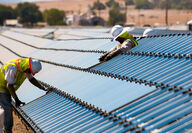
Amongst the rarest of the stable elements on the periodic table and an important ingredient in the emerging thin-film solar panel sector, tellurium embodies what it means to be a critical metalloid – an element that possesses the properties of both a metal and non-metal. "Most rocks contain an average of about 3 parts per billion tellurium, making it rarer than the rare earth elements and eight times less abundant than gold," the United States Geological Survey wrote in a 2...

Extremely hard and with the highest melting point of all the metals, tungsten's toughness is legendary. Like many of the other metals that have found their way onto critical mineral lists in Canada, Europe, and the United States, this durable metal is vulnerable to Chinese control. "World tungsten supply was dominated by production in China and exports from China," the U.S. Geological Survey inked in its 2021 mineral commodities report. It is estimated that mines in China...

From jewelry at a black-tie soiree to scrubbing harmful emissions from the exhaust system of a farm truck, the six platinum group metals – platinum, palladium, rhodium, ruthenium, iridium, and osmium – are metals that are both precious and critical to the United States and Canada. Extremely rare, durable, and with a brilliance that does not tarnish, platinum and other metals in its group are a treasured choice for high-end jewelry that stands the test of time. Three of the...

Roughly 38,000 metric tons of rare earth concentrates were produced from American soil during 2020, yet the United States remains 100% reliant on foreign countries for its supply of these 17 elements critical to our modern high-tech society – an apparent paradox that speaks to the complexities of these enigmatic metals. The irony of rare earth elements (REEs) begins with their name, which is at the same time a misnomer and accurate descriptor. "All the REEs except p...

An unsung war hero that saved countless American troops during World War II, an overlooked battery material that has played a pivotal role in storing electricity for more than 100 years, and a major ingredient in futuristic grid-scale energy storage, antimony is among the most important critical metalloids that most people have never heard of. While antimony may not be part of the common lexicon, humans have been using this semi-metal for more than 5,000 years. "For example,...
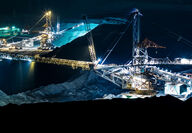
From electric vehicles plugged into renewable energy to smartphones connected to 5G networks, new technologies take advantage of the special properties of a suite of critical minerals and metals that are often rare and in short supply. In addition to the rare earths, cobalt, lithium, and other technology metals that capture headline attention, this list includes even more obscure mined materials such as gallium, germanium, scandium, and tellurium. While scarce, these critical...

A heavy reliance on imports for a long list of minerals and metals critical to American supply chains could be a stumbling block for the Biden administration's ambitious "Build Back Better" agenda. "From the largest infrastructure plan since the Eisenhower interstate highway system, to an aggressive plan for a national energy transition, the Biden administration's agenda will require an immense amount of minerals," National Mining Association President and CEO Rich Nolan...